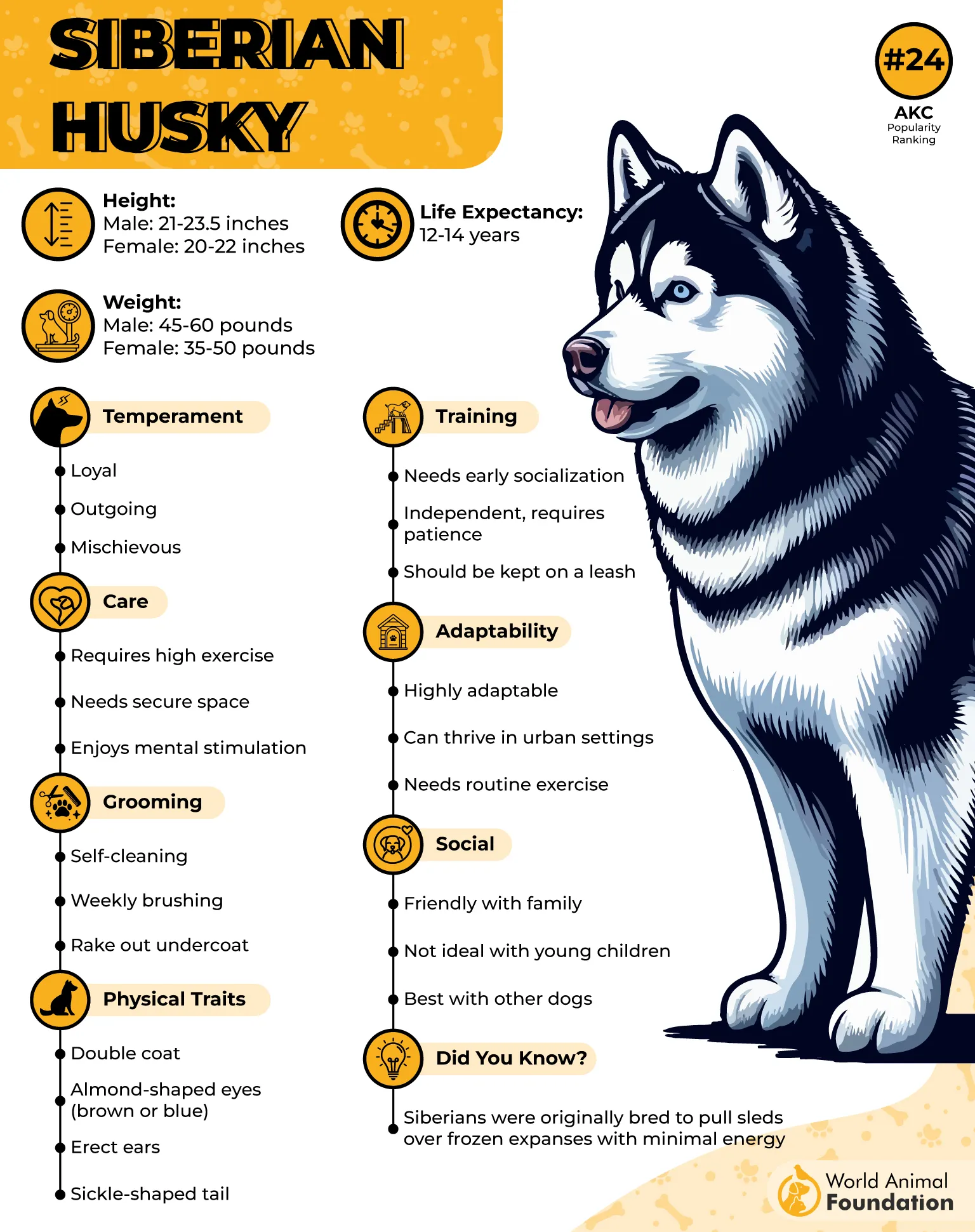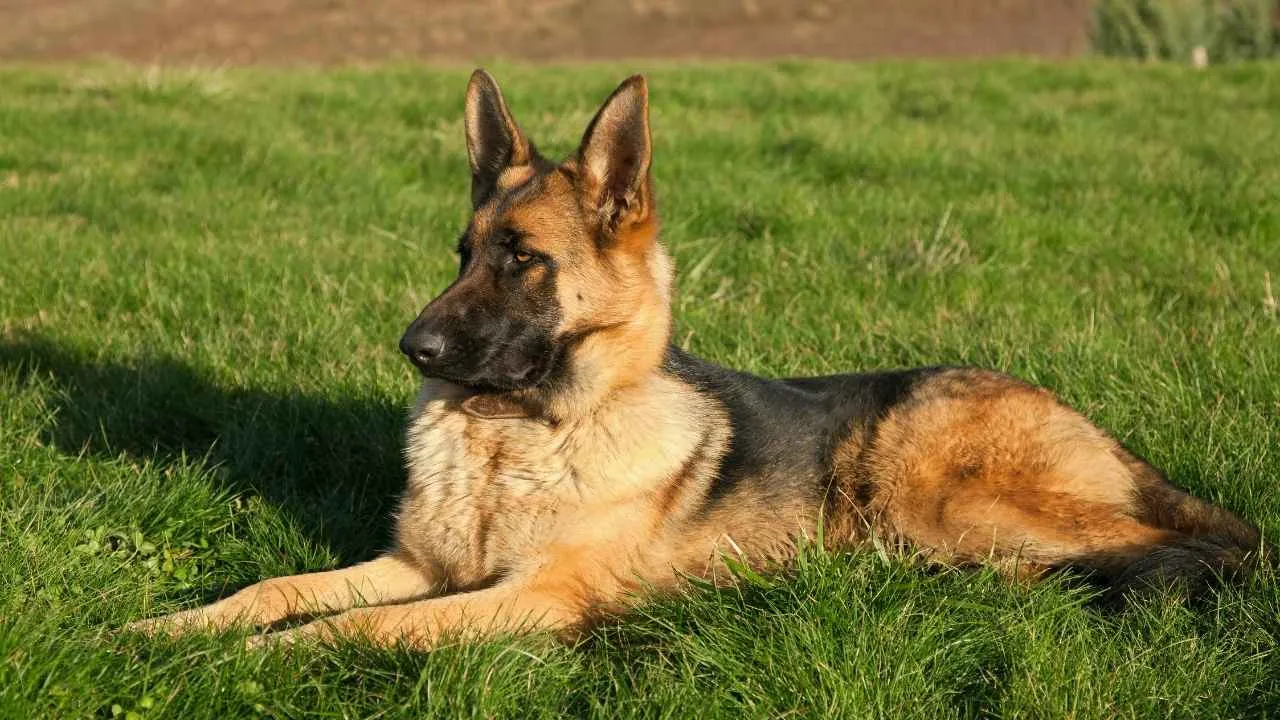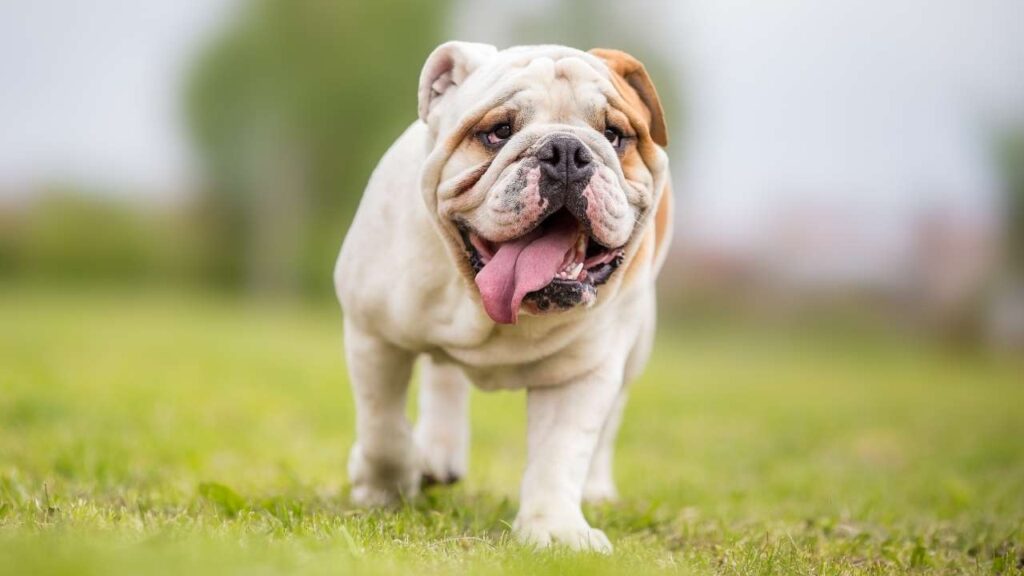When we think of unhealthy dog breeds, our minds often go straight to visible conditions, like hip dysplasia, breathing difficulties, or fragile bones. But many breeds carry struggles that go beyond the physical, quietly affecting their mental and emotional well-being.
These “invisible traumas” often manifest as anxiety, stress, or behavioral issues that owners may mistake for stubbornness or disobedience. In reality, they’re hidden battles rooted in genetics, breeding practices, or chronic discomfort that doesn’t always show up on the surface.
Understanding these unseen challenges is just as important as recognizing physical ailments, because mental health shapes a dog’s quality of life just as much as physical health. From separation anxiety to neurological sensitivities, certain breeds are far more vulnerable than others.
By shedding light on these silent struggles, we can better support our canine companions, offering them not only longer lives but happier ones, too.
Most Unhealthy Dog Breeds Suffering From Invisible Traumas
1. Yorkshire Terrier

Yorkshire Terriers, often called Yorkies, pack a big personality into a tiny frame. Despite their elegant coats and petite size, they were originally bred as working dogs in English mills to catch rats.
This heritage explains their confident, sometimes bossy attitude, which still shows today. Their bravery and feisty energy make them a true terrier at heart.
Their glossy, floor-length coat is more like human hair than fur, making them hypoallergenic but also demanding in terms of grooming. Owners must commit to frequent brushing and weekly baths, or opt for a shorter, more manageable trim.
This coat, combined with their elegant appearance, once made them favorites of Victorian ladies, but behind the looks is a dog that thrives on activity and engagement.

While Yorkies are affectionate, they’re not always the best choice for homes with very young children or larger dogs. Their small size makes them fragile, and their boldness can put them at risk in rough play.
They do, however, bond closely with their owners, often following them around and acting as devoted watchdogs with sharp barks.
According to the AKC, Yorkshire Terriers are generally long-lived, with a lifespan of 11–15 years. Still, they are prone to conditions such as luxating patella (a dislocated kneecap) and eye problems. Owners should be careful with jumping heights and provide regular veterinary screenings to catch issues early.
Because of their high intelligence and eagerness to please, Yorkies excel in training when rewarded with praise and treats. However, harsh corrections can cause stress and reluctance. Positive reinforcement, early socialization, and gentle exposure to new situations will help them grow into confident companions.
Quick Tips
Brush daily or trim their coat short to reduce grooming challenges.
Limit high jumps to protect against knee injuries.
2. Siberian Husky

Siberian Huskies are famous for their wolf-like appearance, striking eyes, and talkative personalities. They were first brought to Alaska in 1908 as sled dogs, and their stamina and endurance remain legendary today.
These traits make them wonderful for active families, but less ideal for apartment living due to their love of running and howling.
Beneath their charisma lies a list of common health issues, particularly eye conditions. PetMD states that Huskies are prone to cataracts, progressive retinal atrophy (PRA), and corneal dystrophy.
These inherited diseases can impair vision over time, so annual eye exams are critical to maintaining their quality of life.

In addition to eye issues, Huskies may develop hypothyroidism, leading to weight gain and skin changes, as well as hip dysplasia. Both conditions require monitoring and, in some cases, lifelong management. Despite these risks, with proper care, Huskies often live 12–14 years.
Behaviorally, Huskies are strong-willed and independent, which can overwhelm first-time owners. Their intelligence means they need consistent training, but they respond best to positive reinforcement. Without mental stimulation, they may dig, chew, or escape, earning their reputation as master escape artists.
Their thick double coat sheds heavily, especially during seasonal changes. Regular brushing and coat care are essential to prevent matting and manage the constant shedding. Because of their heritage, they thrive in colder climates but may struggle in hot weather without proper precautions.
Quick Tips
Provide at least 40 minutes of vigorous daily exercise.
Schedule annual eye exams to catch conditions early.
3. German Shepherd

German Shepherds are one of the world’s most recognizable breeds, celebrated for their intelligence, strength, and versatility. Originally bred as herding dogs, they now excel in police, military, and service work due to their trainability and sharp instincts. Their confidence and loyalty make them both protective guardians and devoted family members.
However, German Shepherds face a range of serious health issues that shorten their lifespan to 7–10 years.
Conditions such as degenerative myelopathy, hip and elbow dysplasia, and exocrine pancreatic insufficiency (EPI) are especially concerning. These invisible traumas often progress quietly until symptoms become evident, highlighting the importance of preventive care.

Their deep chests also put them at risk of gastric dilation-volvulus (bloat), a life-threatening condition. Owners should feed smaller meals and avoid exercise right after eating to reduce this risk. Early gastropexy surgery is sometimes recommended as a preventative step.
Despite these vulnerabilities, German Shepherds thrive when given daily exercise and mental challenges. Without proper stimulation, they may develop destructive behaviors out of frustration. Obedience training, agility, herding activities, and nose work all tap into their natural talents.
Grooming can be intensive, as they shed heavily year-round, especially during seasonal coat blows. Regular brushing and occasional baths help manage their dense double coat. With dedication, these dogs reward their owners with companionship and unwavering loyalty.
Quick Tips
Divide meals into smaller portions to help prevent bloat.
Provide 1–2 hours of structured exercise every day.
4. Beagle
Beagles are spirited scent-tracking hounds known for their friendly demeanor and mischievous streak. Originally bred as pack hunters, they still possess a powerful nose and a strong instinct to follow scents. This can make them wanderers, so owners need secure yards or reliable leashes to prevent unplanned adventures.
Their compact build, sturdy frame, and short weather-resistant coat make them versatile companions. Coat colors range from the classic tricolor pattern to lemon and white, red and white, and even mottled variations. Combined with their gentle expression, these features give the Beagle an approachable charm.
Despite their small size, Beagles have high energy levels and thrive on daily activity. Without sufficient exercise and mental stimulation, they may become vocal or destructive. Expect them to bark frequently, both as watchdogs and as natural communicators.
As per Purina, Beagles are generally robust, but they are prone to issues such as epilepsy, hypothyroidism, ear infections, and a spinal condition called meningitis arteritis.
While not as plagued as some other breeds, these conditions highlight the “invisible traumas” that can affect their well-being. Owners should also monitor weight, as Beagles love food and may overeat if given the chance.
As family dogs, Beagles are affectionate, loyal, and thrive in households with children and other pets. Their pack-oriented nature makes them sociable, though their stubborn streak can complicate training. Patience, consistency, and plenty of rewards help transform their selective obedience into good behavior.
Quick Tips
Secure outdoor spaces, as their scent drive often overrides recall.
Clean ears weekly to prevent infections.
5. Shih Tzu
Shih Tzus are ancient companion dogs with roots tracing back over a thousand years to Tibetan monasteries and Chinese royalty. Their name translates to “Lion Dog,” reflecting both their flowing mane-like coat and their regal presence. These dogs were bred primarily for companionship, and that trait remains central to their temperament today.
Physically, their short muzzles, large eyes, and long coats give them a distinctive look, but also introduce several health challenges.
PDSA states that Shih Tzus are prone to eye conditions such as cataracts, dry eye, and progressive retinal atrophy. Their brachycephalic structure also contributes to breathing issues, collectively known as brachycephalic obstructive airway syndrome (BOAS).
Despite being small, Shih Tzus are lively and need daily walks along with play sessions. They enjoy being involved in all household activities and dislike long periods of solitude. With consistent, reward-based training, they become excellent pets even for first-time owners.
Grooming is a daily responsibility for Shih Tzu owners. Their long double coats tangle easily and require brushing, or else many owners opt for shorter clips every six to eight weeks. Eye and facial cleaning is also essential to prevent irritation and infection.

They are friendly with children and other pets when socialized early, but their delicate size means play should be supervised. Because they were bred as alert watchdogs, they may bark to announce visitors, though proper training can prevent excessive vocalization.
Quick Tips
Keep their coat clipped short unless showing, to simplify maintenance.
Monitor breathing and avoid strenuous activity in hot weather.
6. Bulldog (English Bulldog)

English Bulldogs are iconic for their muscular frame, wrinkled face, and distinctive underbite. Originally bred for bull-baiting, they’ve since transformed into gentle companions known for loyalty and low-key energy. Their easygoing personalities make them excellent family pets, but their health concerns are significant.
As a brachycephalic breed, Bulldogs suffer from BOAS, a condition that makes breathing difficult due to narrowed nostrils, elongated soft palates, and compressed airways.
This makes them prone to overheating, even during short walks in warm weather. Snorting, snoring, and labored breathing are common signs of the struggle hidden behind their endearing appearance.
Bulldogs also face orthopedic challenges such as hip dysplasia, which leads to arthritis and chronic discomfort. Their wrinkled skin is another area of concern, as moisture trapped in folds can cause infections called skin fold pyoderma. Owners must be diligent with daily cleaning to prevent painful irritation.
Despite these vulnerabilities, Bulldogs have big hearts and gentle temperaments. They are devoted to their families and usually do well with children and other pets. Their stubborn streak can show in training, but patience and positive reinforcement go a long way.
Their lifespan averages 8–10 years, shorter than many breeds, reflecting the health burden tied to their unique build. With proper care, though, they provide years of affection, humor, and companionship.
Quick Tips
Always keep them cool and hydrated, especially in summer.
Clean and dry facial folds daily to prevent infections.
7. Pug
Pugs are beloved for their clownish personalities, soulful eyes, and tightly curled tails. Bred as companions for Chinese emperors, they continue to excel as lapdogs and family pets. However, their flat faces and compact bodies come with significant health risks that affect their overall quality of life.
As one of the most severely brachycephalic breeds, breathing is difficult and can cause chronic fatigue, noisy respiration, and dangerous overheating in warm climates. Their prominent eyes are also prone to injuries, infections, and conditions like corneal ulcers.
Spinal deformities such as hemivertebrae and neurological conditions like Pug Dog Encephalitis (PDE) are examples of invisible traumas that can severely impact them. PDE, in particular, causes seizures and progressive neurological decline, making early detection and veterinary care essential.
Despite these challenges, Pugs are deeply affectionate and thrive in households where they receive constant companionship. They do not tolerate being left alone and are happiest when integrated into all aspects of family life. Their love of food, combined with a sedentary streak, makes weight control an ongoing battle for many owners.
Pugs shed heavily despite having short coats, and their skin folds need frequent cleaning. They benefit from moderate daily walks, but exercise must be carefully managed to avoid overexertion. With care, they reward their families with humor, loyalty, and an endless supply of affection.
Quick Tips
Watch for signs of breathing distress and avoid heat exposure.
Maintain a lean weight to ease strain on their airways and joints.
Conclusion
Caring for dogs means understanding that health problems are not always obvious. While breeds mentioned above face well-documented challenges, other breeds such as French Bulldogs, Bull Terriers, Border Collies, English Springer Spaniels, Chihuahuas, and Golden Retrievers also encounter invisible traumas. From dental disease and skin conditions to disorders tied to shallow eye sockets or poor breath control in flat-faced breeds, these issues can cause pain that sadly may worsen with age.
Many of these difficulties occur because of extreme selective breeding practices. By narrowing the gene pool to preserve specific breeds, problems are passed from parents to pups and continue across generations. The truth is that some conditions are breed-specific, while others are uncommon but still devastating. Veterinarians stress the importance of being aware of these risks and supporting responsible breeders who prioritize health over appearance.
Future generations of dogs depend on us making better choices. Whether through careful breeding, considering a crossbreed, or simply giving puppies attentive day-long care, small decisions make a difference. Together, owners and breeders can ensure that animals live longer, healthier lives filled with love rather than suffering.


